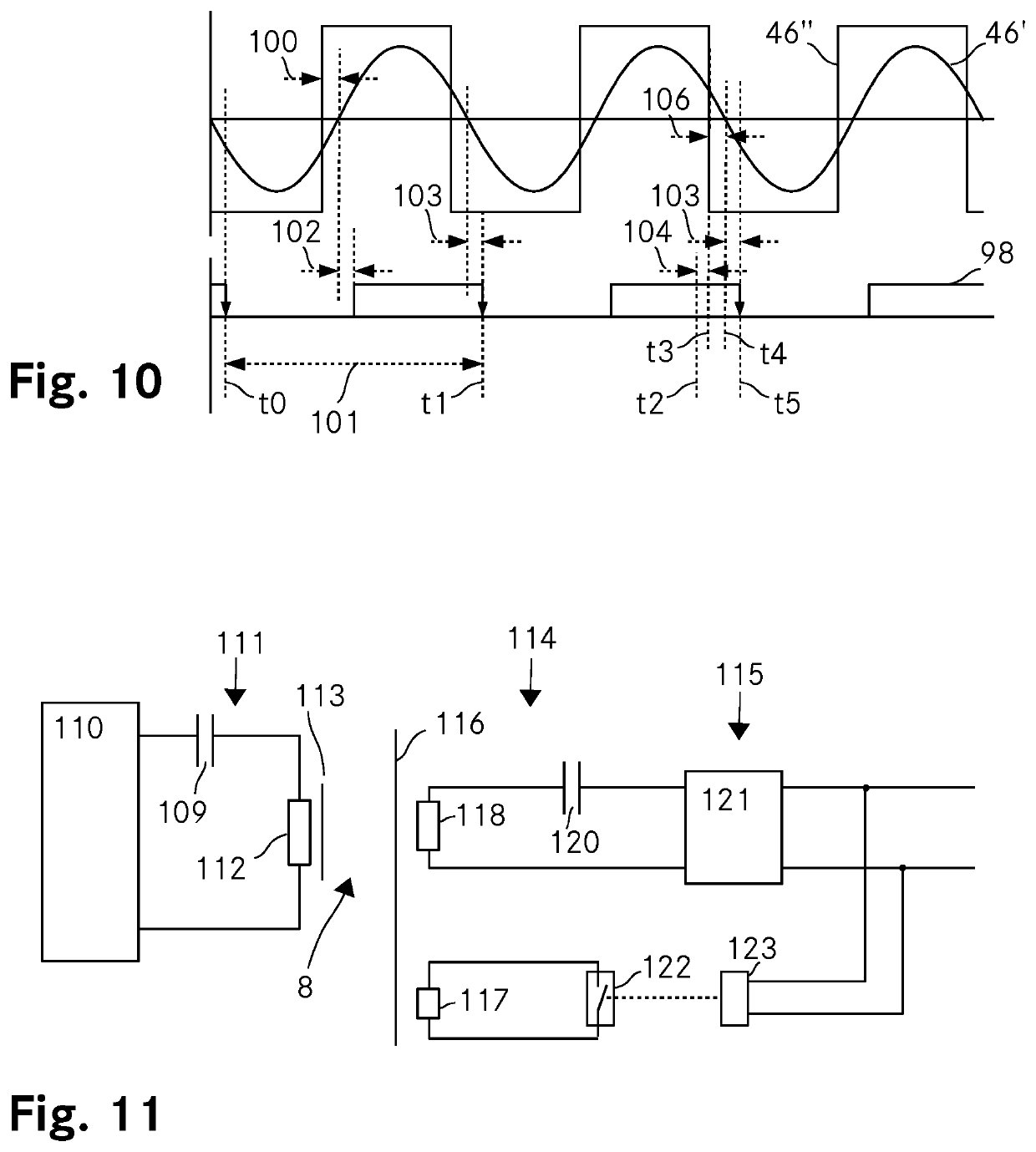Wireless power transfer control
a technology of power transfer and control, which is applied in the direction of transportation and packaging, safety/protection circuits, and lifts, etc., can solve the problems of connector wearout within weeks, difficult handling of charging cables, and fast wear of connectors
- Summary
- Abstract
- Description
- Claims
- Application Information
AI Technical Summary
Benefits of technology
Problems solved by technology
Method used
Image
Examples
Embodiment Construction
[0090]FIG. 1 shows a schematic representation of a first embodiment of a wireless power transfer arrangement 1 according to the invention. The wireless power transfer arrangement 1 includes a primary side 2, a secondary side 3 and a controller 15 which is shown to be separated from the primary side 2 and the secondary side 3. The primary side 2 includes an input stage 5 for converting an input power 4 into an AC primary output power 7 which is fed to a primary resonator 6. The primary resonator 6 induces a magnetic field 9 to wirelessly transmit power across an airgap 8. The secondary side 3 includes a secondary resonator 10 which picks up the magnetic field 9 and converts the power received through the magnetic field 9 into an AC secondary output 12. An output stage 11 is connected to the secondary resonator 10 and converts the AC secondary output 12 to a DC secondary output 13 which is then provided at an output of the wireless power transfer arrangement 1 as an output power 14.
[0...
PUM
 Login to View More
Login to View More Abstract
Description
Claims
Application Information
 Login to View More
Login to View More - R&D
- Intellectual Property
- Life Sciences
- Materials
- Tech Scout
- Unparalleled Data Quality
- Higher Quality Content
- 60% Fewer Hallucinations
Browse by: Latest US Patents, China's latest patents, Technical Efficacy Thesaurus, Application Domain, Technology Topic, Popular Technical Reports.
© 2025 PatSnap. All rights reserved.Legal|Privacy policy|Modern Slavery Act Transparency Statement|Sitemap|About US| Contact US: help@patsnap.com



